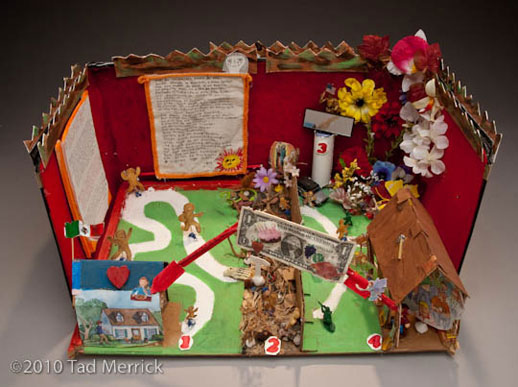 |
El espejismo de un sueňo - The Mirage of a Dream - artist, Z.
Invisible Odysseys
Art by Mexican Farmworkers in Vermont
Invisible Odysseys is an art project which focuses on the lives of Mexican farmworkers in Vermont. The goal of the project is to communicate the often submerged experiences of immigration and ethnicity through material culture, connecting the common threads of past and present journeys.
These farmworkers have made dangerous, arduous, costly, cross-border journeys to reach Vermont, where their labor underpins the dairy industry and its iconic agricultural landscape. Since most of these workers have no formal immigration status, they live in isolation and fear. They are dependent on others to supply their needs, as they are unable to participate fully in life outside the farm. One striking fact is the contrast between the enormous distances that these workers have traveled in order to find work on the dairy farms in Vermont and the restricted lives which they lead when they finally arrive.
Conceived by B. Amore, artist and writer, and implemented in conjunction with Susannah McCandless, geographer, and Ethan Mitchell, independent scholar, the Invisible Odysseys project brought art materials to many of these Mexican farmworkers. Paints, wooden boxes, and mixed media materials were provided so that the workers could engage in making three-dimensional representations of their journeys. Kate Bass, from Juntos (Together), a volunteer student organization at Middlebury College, and Naomi Wolcott-MacCausland, a teacher with the Migrant Education Program have been of invaluable aid in supporting the farmworkers throughout the process.
Other than offering materials and encouragement, no specific direction was given to the artist-workers who participated in the project. They were invited to use the materials to express something of their journeys and experiences. All of the resulting art work was made using their ingenuity, their rich life experiences, and their dogged persistence to fit their art-making into sixteen-hour work days. Through participation in the project, they have told their own stories, in their own words and through their own individual artistic expression. Hidden lives have been made more visible and present to anyone who sees the work and reads the accompanying statements.
The work itself speaks more than words.